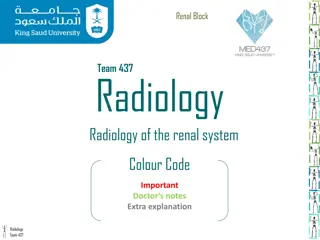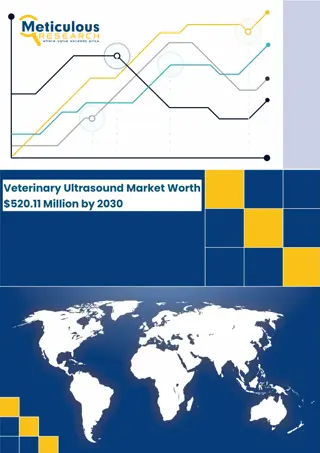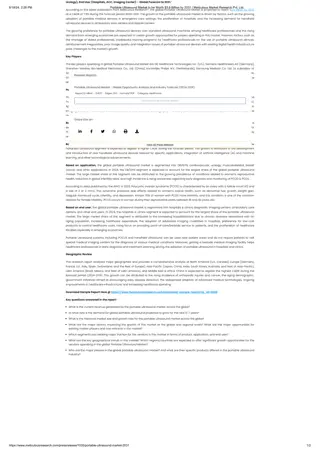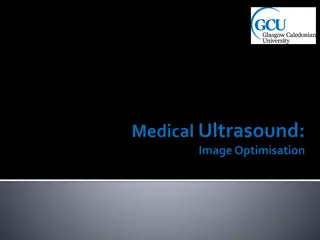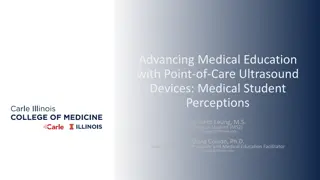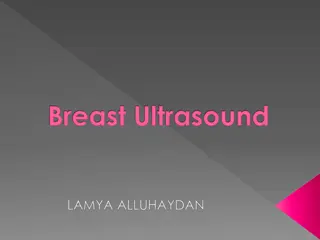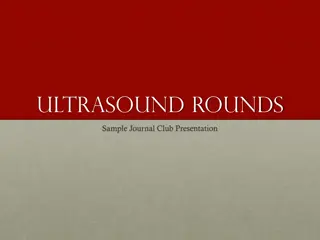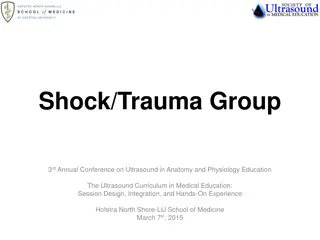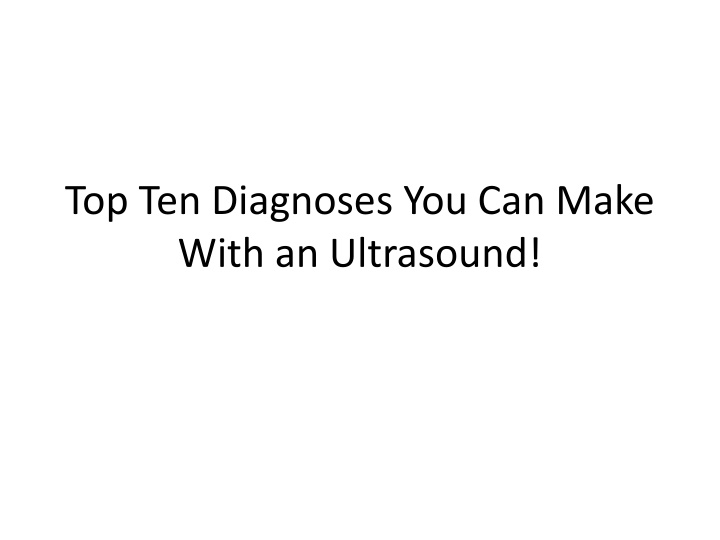
Ultrasound Diagnoses: Abdominal Aortic Aneurysm & Ectopic Pregnancy
Learn about the top ten diagnoses that can be made using ultrasound, focusing on Abdominal Aortic Aneurysm and Ectopic Pregnancy. Understand the significance, identification methods, and implications of these critical medical conditions. Discover why quick and accurate ultrasound assessments are crucial for patient outcomes.
Download Presentation

Please find below an Image/Link to download the presentation.
The content on the website is provided AS IS for your information and personal use only. It may not be sold, licensed, or shared on other websites without obtaining consent from the author. If you encounter any issues during the download, it is possible that the publisher has removed the file from their server.
You are allowed to download the files provided on this website for personal or commercial use, subject to the condition that they are used lawfully. All files are the property of their respective owners.
The content on the website is provided AS IS for your information and personal use only. It may not be sold, licensed, or shared on other websites without obtaining consent from the author.
E N D
Presentation Transcript
Top Ten Diagnoses You Can Make With an Ultrasound!
Number 1 ABDOMINAL AORTIC ANEURYSM
Why it Matters A medical emergency with a high mortality rate (80% when ruptured!) Easily diagnosed with bedside ultrasound but, difficult to diagnose by clinical history alone classic symptoms are actually quite infrequent
Making the Call Examine the entire aorta with the 3.5 MHz curvilinear transducer down to the iliacs Visualize the aorta above and below the renal arteries and measure (should be < 3 cm) Measure the iliacs on both sides, below the aortic bifurcation (should be < 1.5 cm) Measurement should be in the transverse plain
Normal Suprarenal aorta Infrarenal aorta Both should measure about the same!
Normal Clean, no out-pouchings!
Abnormal Aneurysm!
Number 2 ECTOPIC PREGNANCY
Why it Matters A life-threatening complication of pregnancy High morbidity and mortality rate when undiagnosed and ruptured Occurs in roughly 2% of all pregnancies Abdominal pain and bleeding are common ED complaints in pregnant patients this is the diagnosis you don t want to miss!
Making the Call Absence of gestational sac in the uterus A complex mass in the adnexa or fallopian tube Free fluid in the Pouch of Douglas, or even in Morrison s Pouch! Many women with ectopics have no visible adnexal mass of free fluid
Normal Intrauterine pregnancy!
Abnormal Black is Free fluid! Empty uterus!
Abnormal Complex mass in the adnexa!
Number 3 RETINAL DETACHMENT
Why it Matters Patients may have initially localized detachment Without rapid treatment, the condition quickly develops in to permanent vision loss/blindness
Making the Call Choose the linear vascular probe and put gel and tegaderm over it You normally shouldn t see the retina When detached, you see two hyperechoic lines with anechoic fluid in between on the posterior aspect of the eye
Number 4 INCREASED INTRACRANIAL PRESSURE
Why it Matters Monro-Kellie Hypothesis : volume inside the skull is fixed In other words, if you increase the volume of one thing in the brain, you have to decrease the volume of something else Extremely high pressures can lead to brain herniation and death An dilated optic nerve is a sign of increased intracranial pressure
Making the Call Place the same linear probe over the eye and find the optic nerve Draw two lines perpendicular to one another: Line 1 goes from the back of the eye exactly 3mm posterior down the optic nerve Line 2 then cuts perpendicularly at the base of Line 1 from one end of the optic nerve to the other Line 2 should be less than 4.5, otherwise there should be concern for increased ICP
Normal A measure 0.3 cm from the back of the eye B measure the optic nerve where it intersects the A line
Abnormal The optic nerve is dilated signifying increased ICP!
Number 5 URINARY RETENTION
Why it Matters OK, OK, maybe not typically a life-threat but, certainly uncomfortable for the patient And, electrolyte disturbances resulting from post-void diuresis can be significant Ultrasound can quickly help you decide if the patient needs a foley catheter and bladder decompression
Making the Call Volume estimations of a cylinder Your specific ultrasound machine should have a formula built in Three measurements: D1 D2 D3
Calculating First measurement, then click save calc
Calculating Second measurement, save calc again
Calculating Rotate your probe 90-degrees, then measure once more, click save calc and your volume appears at the bottom!
Check for hydro! Normal kidneys
Number 6 GALLBLADDER DISEASE
Why it Matters A quick and easy diagnostic tool that does not require radiation! Significant complications when missed or misdiagnosed: Perforation Ascending cholangitis sepsis death
Making the Call Three views: a view in long axis, transverse axis, and left lateral decubitus (to see if the stone moves!) Look for the common bile duct to see if it is dilated Signs of cholecystitis: Gallbladder wall that is bigger than .5 cm Fluid around the gallbladder
Abnormal Stones in the GB Stones shadowing!
Abnormal Thick gallbladder wall, measured here at 0.76cm!
Number 7 PLEURAL EFFUSION
Why it Matters A treatable cause of shortness of breath frequently encountered in the ED Often visible on chest x-ray, but difficult to quantify US can also aid in finding the best location for thoracocentesis or chest tube placement
Making the Call Use the linea vascular probe and place it in three locations anterior, posterior, and axillary Look for hypoechoic (black) dead space between the granular appearing lung and the bright, hyperechoic pleura
Normal Soft tissue Pleural lining Normal lung
Abnormal Pleural effusion Compressed lung
Number 8 PERICARDIAL EFFUSION
Why it Matters A cause of cardiovascular collapse that requires emergent treatment US can quickly diagnose the problem and guide safe treatment (pericardiocentesis)
Making the Call Best seen on subxiphoid view with the cardiac probe as an anechoic (black) area surrounding the echogenic (bright) heart Ideally you see a four-chamber view to assess for ventricular collapse
Abnormal Pericardial effusion
Number 9 FREE FLUID IN THE ABDOMEN
Why it Matters In the case of a trauma patient, generally means the patient is bleeding A surgical emergency, and an indication for an exploratory laparotomy Much less invasive that other tests for free fluid (DPL)
Making the Call The FAST Exam, a focused assessment with sonography in trauma, which literally should be a fast exam! Four views in the abdomen: Morrison s pouch, the splenorenal gutter, subxiphoid space, suprapubic space If you see fluid, there is at least 250 mL in the abdomen
Normal Morrison s Pouch Splenorenal Recess


